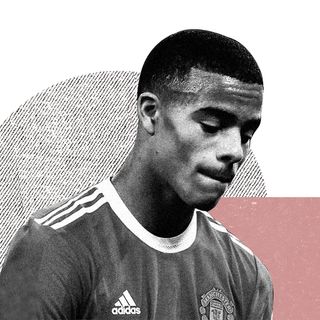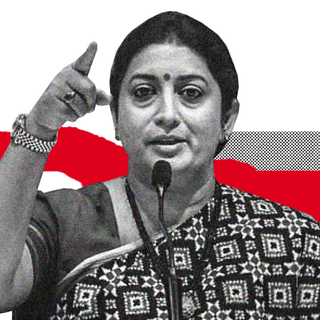
News Panels Moderated by Men Are Far More Hostile Than Women‑Led Panels, Finds Report
An analysis by the Network of Women in Media of 31 television news and talks shows highlights how toxic masculinities are performed on television.

Sometime over the last decade, Indian television news became synonymous with noise. Frenzied debates, sensationalism, verbal violence all play out across news bulletins, panels, and talk shows. A new report traced the embedded hostility and sexism in these news programs and found a genderedpattern. More than 50% of all news shows sampled in the analysishad some form of aggression, and male anchors were more likely to show “aggressive masculinist” behaviors, like demeaning their panelists, in comparison to women anchors.
The report, titled “Staging Aggressive Masculinity,” was published earlier this week by the Network of Women in Media. The researchers monitored 185 news channels and talk shows across 31 channels in 12 languages, to identify how masculinity is performed on Indian television. These channels include ABP Ananda, WION, CNN-News18, News 18 Bangla, NDTV Hindi, Republic, Saam TV, Odisha TV, Times Now, Kanak TV, among others. The researchers supplemented these findings with a parallel analysis of what transpires on social media — in how this toxic masculinity replicates in online discourse.
Three common tropes by which this masculinity thrives are: using aggression (tone of voice, sound and visual effects) instead of facts; dominance (caste-based, religion-based, gender); and sexism in speech and behavior.
Sample these numbers. When a male anchor moderated a news panel, more than 50%of those had aggressive masculinity on display — things like speaking over the panelist, body language, more shouting over one another. For instance, a Doordarshan Malayalam show on September 28, with one male anchor and four male panelists, turned into finger-pointing and aggressive tone.
“It was also observed that the anchor sometimes tried to exert dominance over the panelist’s viewpoints by paraphrasing their comments and interpreting different conclusions,” the report found. In comparison, only 15% of panels moderated by women had similar displays.
The pattern seems to be direr on talk shows, which are relatively less constrained in their format. Almost 85% of talk shows sampled had some display of toxic masculinity — be it in the form of dominating others, using an aggressive tone, or using dismissive language (which was an indicator of “overt sexism”). When it comes to gender-sensitive language, womenanchors were found to be more cognizant as compared to their male colleagues – 41.57% as opposed to 35.42%.
The media industry is built on certain truths — one among them being that it remains male-dominated despite the increasing representation of women in journalism. This impacts what becomes news and how that news is framed. But the findings highlight how journalists also become complicit in displaying a “masculinist” performance. Purported “masculine attributes” — like “valor, strength, honor, and courage” – are naturalized as “essentially male” through this journalistic performance.
Arguably, this is not a critique of male journalists. “…but of the hegemonic and toxic associations of masculinity with aggression, dominance, misogyny and, ultimately, violence,” notes the report.
Related on The Swaddle:
People’s Trust in News Grew Globally During Covid19 but Remained Low in India: Survey
In embracing bluster, televised journalism has normalized aggression and masculinity. It comes with a cost. For one, it reinforces the idea that “masculinity” and “power/dominance” constitute “good” journalism.
Interestingly, both male and female journalists on panels were likely to engage in masculinist behaviors. So while 78.13% of male anchors surveyed used an aggressive tone while speaking, the number was only marginally lesser for female anchors — at 75.28%.
How do we explain this? Finnish researcher Ojajärvi ja Valtonen argued that news is a masculine genre — representing the values traditionally considered masculine. Then, this forces a woman in media to “become one of the boys” or be dismissed unless “she is willing to [conform] to masculine norms.” As a scholar once pointed out: “When something is about masculinity, it isn’t always about men.”
This behavior also inevitably leads to lesser representation and diversity across televised news media in general.
Moreover, this toxic masculinity on television as displayed by these “dominant” journalists replicates the tone and tenor ofhate speech and vitriol online. “Toxic masculinity combined with right-wing, hyper-nationalist, majoritarian ideology was evident in the discourse on social media. Anyone critical of the ruling establishment was branded ‘anti-national’ and subjected to verbal assault by online trolls,” the report noted.
Patriarchy is increasingly being discussed in the context of multiple oppressive ideologies, “including hyper-nationalism, ethnocentricism, racism, and casteism, all of which link in essential ways with masculinities.” Tied to each of these -isms, the writers explain, “masculinities becomes a hegemonic and eventually toxic force that serves to entrench existing hierarchies and modes of being.”
This toxic masculinity on screen is, arguably, the tip of the iceberg. More pernicious and deeply rooted ways of gender-based oppression play out across the media production process. But identifying the problem, as they say, is the first step to actually doing something about it.
One of the recommendations NWMI proposes is to develop an “Ethical Editorial Handbook” for all news channels; this could include a checklist “to score journalistic performance and programming on a toxic masculinity scale.” Think of questions like: “do you feel a constant urge to tell your panelists that they are wrong, totally wrong, completely wrong” or “Do you never notice that your panels are all manels and/or savarna”?
#vaccines for #TVanchors. #WeRecommend #Primetimetelevision #VaccinesSaveLives pic.twitter.com/N0FJ9m4r0o
The report also urges news channels to ensure more diverse panels during the talk shows. “Greater diversity of guests on panels and talk shows is crucial. It is particularly important to include members of groups that have historically been marginalized on the basis of gender, caste, creed and other identities, class, occupation, location, disability, sexual orientation, and so on.”
Saumya Kalia is an Associate Editor at The Swaddle. Her journalism and writing explore issues of social justice, digital sub-cultures, media ecosystem, literature, and memory as they cut across socio-cultural periods. You can reach her at @Saumya_Kalia.
Related


Rape Allegations Against Man Utd Player Force Football To Confront an Enabling, Toxic Fan Culture
